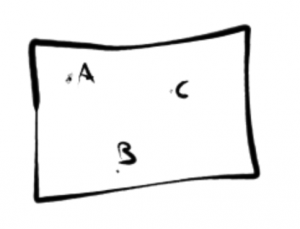Electric Fields (Part 1 of 2)
Part 2 of Electric Fields is here: Electric Fields (Part 2 of 2)
- Like charges repel
- Opposite charges attract
Coulomb’s Law (Inverse Square Law)
The magnitude of the force between two charges is proportional to the product of the magnitude of the charges.
Fe = K q1 q2 / r2
q1 × q2 = c2, after multiplication
r2 = m2
| number | – denotes the numbers absolute value – ignoring negative notation, eg. | -3.124 | = 3.124
Ke = approx. 9×109 Nm2/c2
Example:
Q1 = 5×10-3 c
Q2 = -1×10-1 c
∴ Fe = 9×109 Nm2/c2 | (5×10-3 c) (-1×10-1 c) | / (0.5 m)2
Fe = 45×105 Nm2 / 0.25 m2
Fe = 1.8×107 N – Attractive force
Sometimes the r2 is denoted as d2 – for distance
Conservation of Charge Law
*∑q = Constant
* = No net change incoming or outgoing
∑ = Sum of all
q = charge (c)
For example, a closed box:
- A = +2 c
- B = +5 c
- C = -3 c
The sum of all charges = + 4 c, which remains constant if the box is closed.
These charges may move, collide, exchange charges – the point is: even if the particles change after x amount of time; the charge will still be the same.
To continue with the above box, after 1 hour:
- A = +1 c
- B = -7 c
- C = ?
A + B + C = + 4 c
1 + (-7) + C = + 4 c
∴ C = + 10 c
This law is also true in forms of decaying particles
Recommended Reading for Physics






You must be logged in to post a comment.